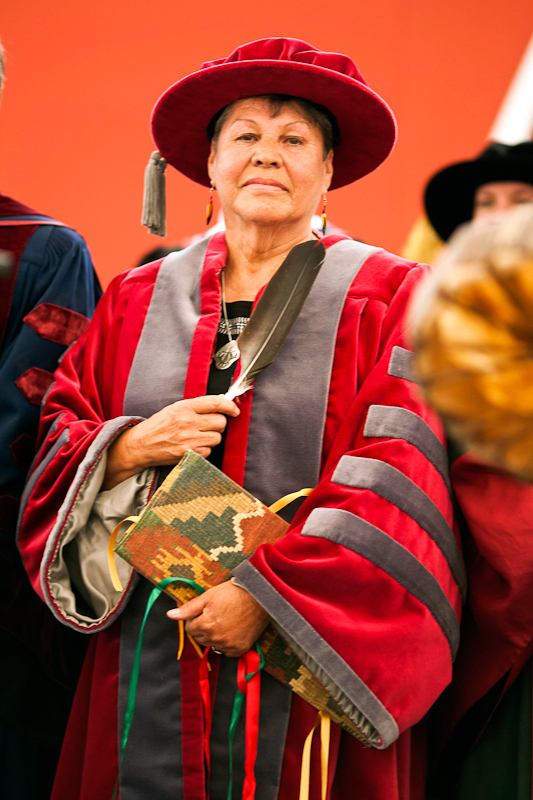When Shirley Horn moves into her office this year as Algoma University’s first chancellor, she will be returning to the same building where she spent eight years as a child in a residential school.
Shingwauk Hall is a building that sits in the middle of Algoma’s campus. The building had housed the Shingwauk Indian Residential School for nearly 100 years, until Algoma University moved onto the site in the 1970s.
The building is named after Chief Shingwauk, a local Anishinaabe chief who envisioned it in the 1800s for a “teaching wigwam,” a building where Aboriginal peoples could learn in a welcoming environment, according to Horn.
“Of course, as you know, the whole outcome turned into something very different,” Horn said.
Becoming chancellor, Horn said she believes there is a “spiritual entwining” of her life and the building that betrayed Chief Shingwauk’s goals in the 19th century.
“It’s a complete circle,” she said. “This is a story that was in the making in the 1800s. It was already being envisioned.”
Horn was one of an estimated 150,000 Indigenous children who were removed from their families as part of a Canadian federal policy to assimilate Aboriginal peoples into white Canadian society.
In 2008, Prime Minister Stephen Harper apologized on behalf of the federal government for the pain the residential school system inflicted on Aboriginal peoples. The same year, the Truth and Reconciliation Commission (TRC) was set up to investigate the effects of the residential school system, releasing a summary of its report on June 2.
The report found that on top of the physical, psychological, and sexual abuse many students faced, the residential school system amounted to nothing short of “cultural genocide.”
Ninety-four recommendations were made by the commission for moving forward with reconciliation.
These include funding post-secondary institutions to educate teachers on how to integrate Indigenous knowledge and teaching methods into classrooms, making age-appropriate curriculum on residential schools, and greater funding for Aboriginal students to attend school.
In her new position as chancellor, Horn said she hopes to continue promoting awareness of what happened in the schools.
“We may not like it, but the history is what it is,” Horn said. “Too many people know nothing about residential schools.”
In 1981, Horn was a founding member of the Shingwauk Alumni Association, where survivors of the school came together to reflect on their time at the institution.
“We began to hear the stories of some of our friends who had been molested and who had suffered some of the abuses,” Horn said of the association’s first meetings.
The group became involved in efforts to receive compensation from the federal government for damages caused by residential schools and their legacies, according to Horn.
Algoma University represents a unique opportunity for reconciliation, according to university President Richard Myers.
“Most of the schools have been torn down . . . but here’s a place where the old Indian residential school is now a modern university in which the local Indigenous peoples have a very significant role,” he said.
When Algoma moved onto the grounds of Shingwauk Hall in 1975, it gave the university a completely different direction, said Myers. In 2008, language was inserted into the university’s charter that gave the school a special mission to promote cross-cultural education with Anishinaabe peoples, he said.
The Algoma campus is also home to Shingwauk Kinoomaage Gamig, a school that provides post-secondary education from an Anishinaabe perspective.
In 2005, Horn returned to Shingwauk Hall to complete a bachelor of fine arts from Algoma.
Horn said she is excited about the opportunities presented by her new job.
“This is not going to be a position of convenience, or a position of tokenism,” she said.” This is a position of real possibilities.”






